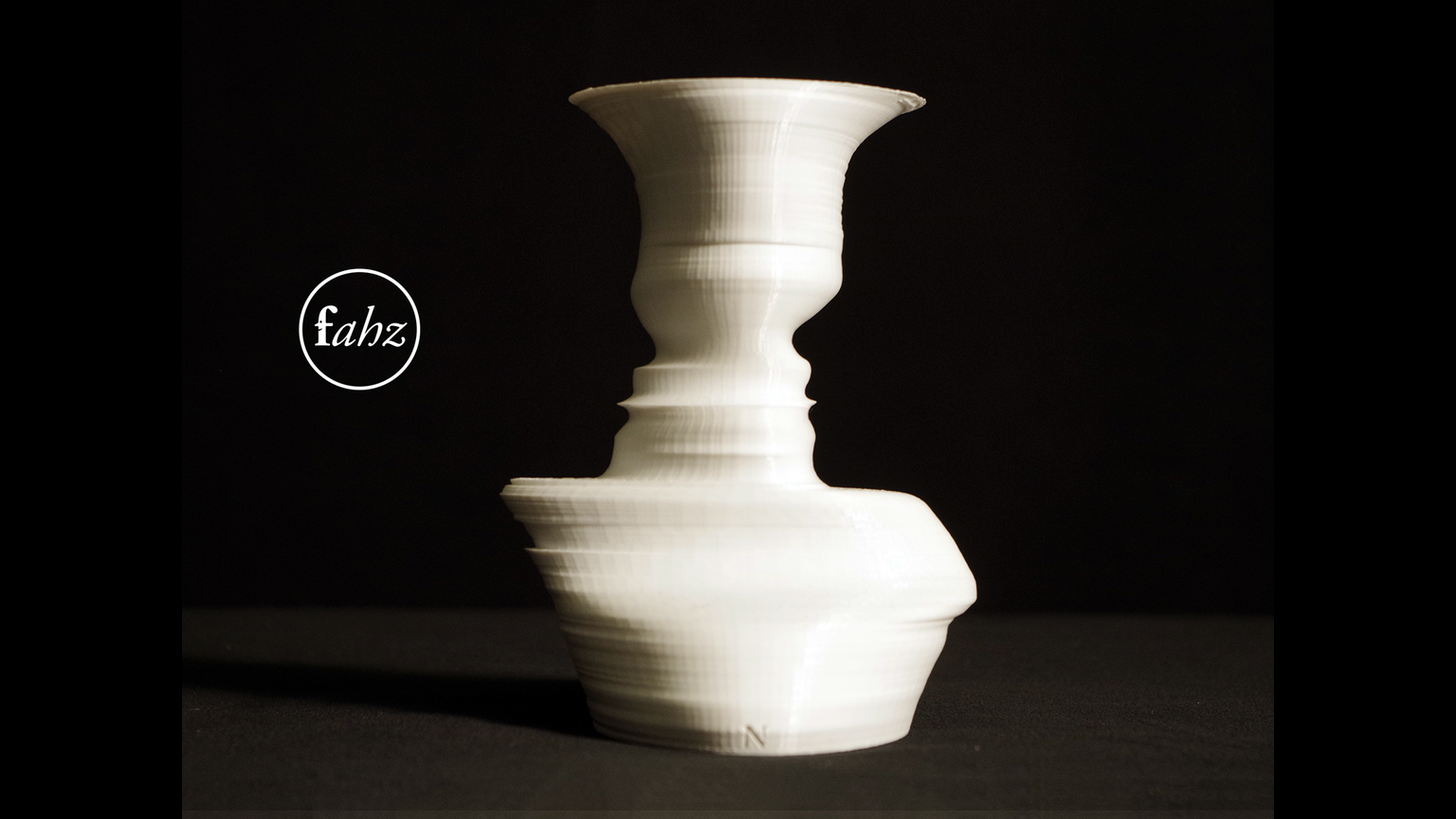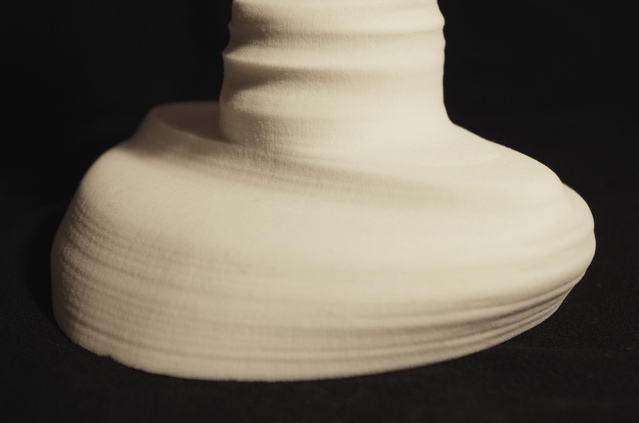

Fahz initially started as a project by Nicholas Desbiens in 2015 for Mother’s Day. It created a customized 5″ vase that seamlessly incorporated the faces of him and his two children in the vase’s surface structure. Utilizing a custom software program he calls the “Fahz-o-matic” built by Rhino, Grasshopper, Python and Processing, he made a digital model of each person’s profile headshot. The variables for this probably include the distance from each point on the face to the y-axis. Then, he rotated the 2D models about the y-axis generating a 3-D vase. Finally, 3D printers bring the algorithms to life. The material used is a plastic called PLA. Desbiens’s intentional decisions include utilizing negative space. The coding also determines how to join each slice of the vase together. Because the height and depth of each face on an individual vase is different, the program needs to decide which two faces are joined together and how many to join together. (12 faces generated a “dog-bowl” rather than a vase)

This project was inspired by Edgar Rubin’s Figure–Ground Vase. It is inspirational that coding can bring 2D art from 100 years ago into a customized 3D sculpture today. This Digital Pottery project has now expanded into a business that allows customers to submit profile pictures and get a customized vase. Building on Professor Levin’s idea, each individual vase is already fascinating, but the program that creates infinite varieties of it is priceless.
Sources
Desbiens Design Research – fahz
Check out the video:
Nicholas and Martha Desbiens talking about fahz on Kickstarter
![[OLD – FALL 2016] 15-104 • COMPUTING for CREATIVE PRACTICE](https://courses.ideate.cmu.edu/15-104/f2016/wp-content/uploads/2020/08/stop-banner.png)